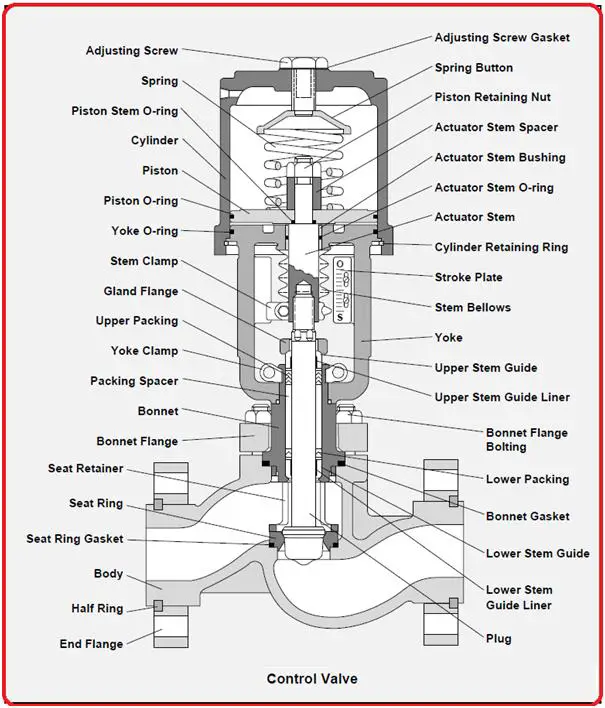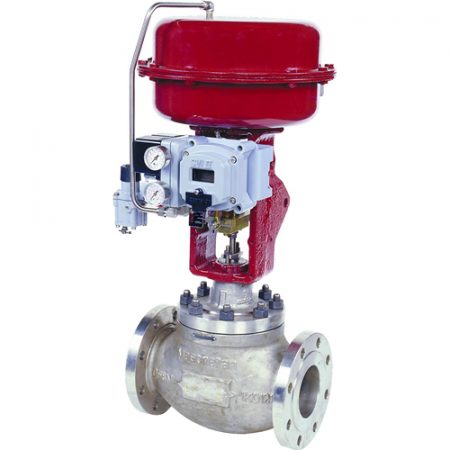Reliable Control Valves: Trick Components for Effective System Monitoring
Reliable Control Valves: Trick Components for Effective System Monitoring
Blog Article

Maximize Energy Cost Savings and Comfort With Advanced Building Automation Controls
In the world of modern architecture and facility monitoring, the integration of innovative structure automation manages stands as a critical innovation. The convergence of technology and sustainability has actually birthed a brand-new period where energy efficiency, convenience optimization, and operational streamlining are no more distant aspirations yet obtainable realities. By utilizing the power of automation, structures can adjust, respond, and advance in manner ins which were as soon as unimaginable. The possibility for considerable power cost savings and boosted comfort is not simply a possibility yet a pledge waiting to be satisfied. This paradigm shift in structure administration holds the key to opening a globe where environmental conscientiousness and occupant health sympathetically exist side-by-side within the wall surfaces of our frameworks.
Energy Performance Perks
Power performance benefits can significantly lower energy intake and operational expenses in structures. By implementing energy-efficient practices and innovations, structure proprietors and operators can accomplish significant financial savings while also contributing to ecological sustainability. One of the main benefits of enhancing power performance in structures is the reduction of energy costs. Energy-efficient systems, such as advanced building automation controls, can maximize using resources like cooling, illumination, and home heating, leading to reduced energy expenditures over time.
Moreover, boosted power efficiency can lengthen the life expectancy of building tools and systems. By operating more successfully, HVAC systems, light, and other structure components experience much less deterioration, resulting in minimized maintenance and replacement costs. Additionally, energy-efficient structures commonly regulate greater residential or commercial property values and rental prices, offering lasting monetary advantages to owners.
In addition, energy performance can improve owner comfort and performance. Appropriately regulated interior atmospheres with optimal illumination and thermal problems develop a more helpful and enjoyable work space, causing improved staff member satisfaction and efficiency. In general, the energy effectiveness benefits related to innovative structure automation controls are diverse, encompassing price savings, ecological stewardship, and occupant well-being.
Enhanced Convenience Control
Enhancing convenience control in building atmospheres needs an innovative assimilation of sophisticated automation systems for optimal passenger wellness. By using sophisticated building automation controls, facilities can tailor the indoor setting to fulfill the details demands and choices of occupants. These systems make it possible for specific law of ventilation, temperature level, and lights, producing a productive and comfy environment. Passenger satisfaction and performance are very closely connected to thermal comfort, making it necessary to have systems in location that can adapt to changing conditions in real-time.
By including these innovative controls, buildings can not only improve comfort however additionally boost power performance by optimizing system operations based on actual occupancy and use patterns. Eventually, focusing on owner comfort through sophisticated automation systems leads to a much more delightful and healthier indoor environment.
Operational Performance Improvements

Additionally, the implementation of real-time surveillance and analytics devices enables structure operators to recognize energy inefficiencies and functional anomalies quickly. By continually monitoring power usage patterns and system efficiency metrics, adjustments can be made in real-time to enhance energy usage and ensure peak operational efficiency. control valves. Furthermore, incorporating demand feedback techniques discover this info here right into building automation controls can additionally enhance operational performance by dynamically adjusting energy use based on grid conditions and rates signals
Indoor Climate Optimization
Reliable indoor environment optimization is a basic element of building automation controls, making sure occupants' comfort and well-being while optimizing power savings. By using innovative sensors and controls, developing automation systems can continually keep track of and change temperature, humidity levels, air high quality, and ventilation to produce an ideal interior atmosphere. Keeping comfortable and consistent conditions not only enhances resident satisfaction but likewise increases performance and total well-being.
Indoor climate optimization also plays a critical role in energy efficiency. By fine-tuning heating, ventilation, and cooling systems based on real-time data and tenancy patterns, developing automation controls can substantially minimize energy consumption - control valves. As an example, applying approaches such as demand-controlled ventilation and thermal zoning can help minimize power waste while making certain that each location of the building obtains the needed conditioning.

Sustainable Setting Development
Building automation manages not only maximize indoor environment conditions for power efficiency and owner comfort yet likewise lay the structure for producing a lasting environment via tactical monitoring of systems and sources. By integrating sophisticated structure automation technologies, such as sensors, actuators, and intelligent software application, centers can monitor and adjust energy usage in real-time to decrease waste and decrease their carbon impact. These systems enable predictive maintenance, recognizing potential problems prior to they rise and optimizing devices efficiency to boost longevity and effectiveness.
In addition, lasting environment development prolongs past power monitoring to encompass water conservation, waste reduction, and indoor air high quality renovation. Structure automation controls can manage water use, spot leakages, and make certain correct garbage disposal practices, adding to overall sustainability efforts. Additionally, by checking and regulating air flow and purification systems, these technologies enhance passenger wellness and performance while lowering power intake related to a/c procedures.
Conclusion
In final thought, progressed building automation regulates check my reference deal substantial benefits in terms of power financial savings, convenience control, functional performance, indoor environment optimization, and developing a lasting setting. By applying these controls, structures can attain optimal efficiency while minimizing energy consumption and boosting passenger comfort. It appears that making use of sophisticated automation technology is crucial in boosting building performance and developing a much more sustainable future.
Power efficiency advantages can dramatically minimize energy usage and operational prices in buildings. Overall, the energy performance benefits associated with innovative building automation controls are complex, including cost savings, ecological stewardship, and resident well-being.
Additionally, integrating need feedback strategies right into structure automation controls can better enhance operational efficiency by dynamically changing power use based on grid problems and pricing signals.
Structure automation regulates not only maximize interior environment conditions for energy efficiency and passenger comfort however additionally lay the structure for developing a sustainable environment through tactical administration of sources and systems.In final thought, progressed structure automation controls offer considerable benefits in terms of energy savings, comfort control, operational effectiveness, indoor climate optimization, and producing a sustainable atmosphere.
Report this page